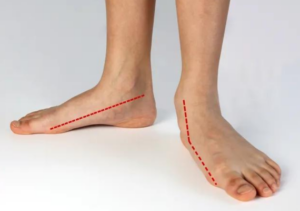Flat foot, medically known as pes planus, is a condition where the arches of the feet are flattened, causing the entire sole of the foot to contact the floor when standing. This can lead to discomfort, pain, and difficulty with certain physical activities.
Causes of Flat Foot
- Genetics: Some individuals inherit flat feet due to genetic factors affecting the structure and alignment of bones and muscles in the feet.
- Foot Development: Flat feet may develop during childhood as the arches fail to develop properly.
- Injury: Trauma or damage to the muscles or tendons of the foot can lead to flat foot.
- Arthritis: Conditions such as rheumatoid arthritis or osteoarthritis can affect the joints and contribute to flat foot.
- Neurological Conditions: Disorders affecting nerve function, such as muscular dystrophy or cerebral palsy, can lead to flat foot.

